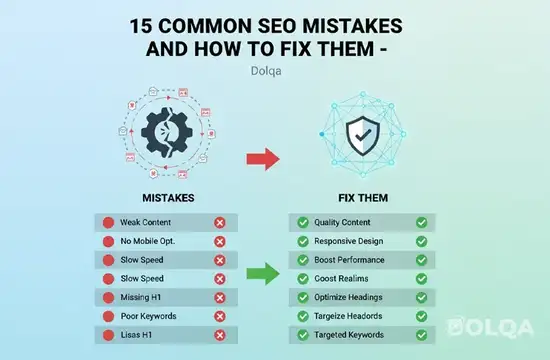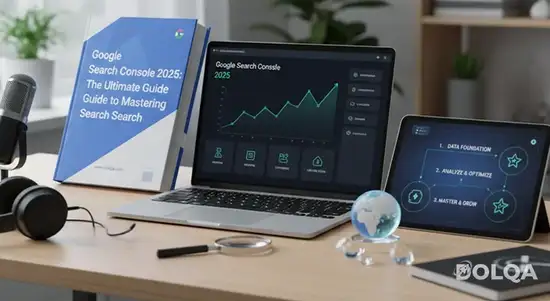Introduction
Search engine optimization remains one of the most cost-effective digital marketing strategies available, yet many newcomers sabotage their efforts through preventable mistakes. Understanding common SEO errors and implementing beginner SEO tips can dramatically accelerate your ranking improvement journey. This comprehensive guide examines the most frequent pitfalls that undermine website visibility and provides actionable solutions to help you establish a solid foundation for long-term search success.
Critical Content-Related SEO Errors
Keyword Stuffing and Over-Optimization
One of the most damaging SEO errors involves cramming excessive keywords into content unnaturally. Search engines have evolved significantly, and modern algorithms penalize this practice rather than reward it. Instead of repeating the same phrase dozens of times, focus on creating comprehensive content that addresses user intent through varied, semantically related terms.
Best practice: Maintain a keyword density between 1-2% and prioritize readability. Use synonyms, related phrases, and natural language that flows conversationally while covering your topic thoroughly.
Neglecting Content Quality and User Intent
Many beginners concentrate exclusively on search engines while forgetting the human readers who ultimately consume their content. Publishing thin, superficial articles that fail to provide genuine value creates high bounce rates and poor engagement signals—both detrimental to rankings.
Solution: Research what users actually want when they search for your target keywords. Examine top-ranking competitors, identify content gaps, and create resources that genuinely answer questions and solve problems better than existing alternatives.
Technical SEO Mistakes That Undermine Performance
Ignoring Website Speed and Mobile Optimization
Page loading speed directly impacts both user experience and search rankings. Technical SEO encompasses numerous performance factors, and slow-loading websites consistently lose visitors and search visibility. Additionally, with mobile devices generating over half of all web traffic, responsive design has transitioned from optional to essential.
Action steps:
- Compress images without sacrificing quality
- Minimize CSS, JavaScript, and HTML files
- Implement browser caching
- Use content delivery networks (CDNs) for faster global access
- Test mobile responsiveness across multiple devices
Broken Links and Crawl Errors
Dead links frustrate users and waste crawl budget—the resources search engines allocate to indexing your website. Broken internal links prevent search engines from discovering your content, while external broken links diminish credibility and user trust.
Preventive measures: Regularly audit your website using tools like Google Search Console to identify and fix broken links. Implement 301 redirects for moved pages rather than leaving visitors and search engines stranded on error pages.
Missing or Poorly Optimized Meta Tags
Meta titles and descriptions serve as your website's first impression in search results. Many beginners either leave these elements to default settings or create generic descriptions that fail to attract clicks. Low click-through rates signal to search engines that your content may not be relevant, potentially harming rankings.
SEO best practices for meta tags:
- Create unique titles for every page (50-60 characters)
- Write compelling meta descriptions that include primary keywords (150-160 characters)
- Incorporate action-oriented language that encourages clicks
- Ensure accuracy—meta content should accurately reflect page content
Structural and Strategic Missteps
Poor Site Architecture and Navigation
Complex, confusing website structures make it difficult for both users and search engines to find important content. A website that requires numerous clicks to reach key pages dilutes link equity distribution and creates poor user experiences.
Optimal structure: Implement a logical hierarchy where important pages sit no more than three clicks from the homepage. Use clear, descriptive navigation labels and create XML sitemaps to help search engines understand your site organization.
Neglecting Internal Linking
Internal links distribute page authority throughout your website and establish topical relationships between content pieces. Beginners often publish isolated articles without connecting them to related resources, missing significant ranking improvement opportunities.
Implementation strategy: Link from high-authority pages to newer content that needs visibility. Use descriptive anchor text that provides context about the linked page, and create content clusters around core topics to establish topical authority.
Duplicating Content Across Multiple Pages
Duplicate content confuses search engines about which version to rank and can dilute your website's overall authority. This issue frequently occurs with product descriptions, location pages, or when syndicating content without proper implementation.
Resolution: Use canonical tags to indicate preferred versions of similar pages, create unique descriptions for all products, and implement proper pagination for lengthy content series.
Off-Page SEO Errors to Avoid
Building Low-Quality Backlinks
Not all backlinks contribute equally to ranking improvement. Links from spam websites, link farms, or irrelevant sources can trigger penalties rather than boost rankings. Quality consistently outweighs quantity in modern link building.
Better approach: Focus on earning natural links through exceptional content, guest posting on reputable industry websites, and building genuine relationships within your niche community.
Ignoring Local SEO Opportunities
Businesses serving specific geographic areas often overlook local optimization strategies. Missing Google Business Profile optimization, inconsistent NAP (Name, Address, Phone) citations, and neglecting local keywords represent significant missed opportunities.
Monitoring and Measurement Mistakes
Failing to Track Performance Metrics
Many beginners implement SEO strategies without establishing baseline metrics or tracking progress. Without data, determining what works becomes impossible, leading to wasted effort on ineffective tactics.
Essential metrics to monitor:
- Organic traffic volume and trends
- Keyword ranking positions
- Conversion rates from organic search
- Bounce rate and average session duration
- Backlink profile growth and quality
Setting Unrealistic Expectations
SEO requires patience and consistent effort. Beginners often expect immediate results and abandon effective strategies prematurely. Sustainable ranking improvement typically requires several months of consistent optimization and quality content creation.
Conclusion
Avoiding common SEO errors significantly accelerates your path to search visibility and organic traffic growth. By implementing these beginner SEO tips and adhering to SEO best practices, you establish a solid foundation for long-term success. Remember that technical SEO, quality content creation, and strategic optimization work together synergistically—neglecting any component undermines overall effectiveness.
Start by auditing your current website against these common mistakes, prioritize fixes based on potential impact, and implement improvements systematically. Continuous learning and adaptation to algorithm updates ensure your SEO strategy remains effective as search technology evolves.
What SEO challenges are you currently facing? Share your experiences and questions in the comments below to help build a community of learners committed to ranking improvement.







Comments (0)
Leave a Comment
No comments yet. Be the first to comment!